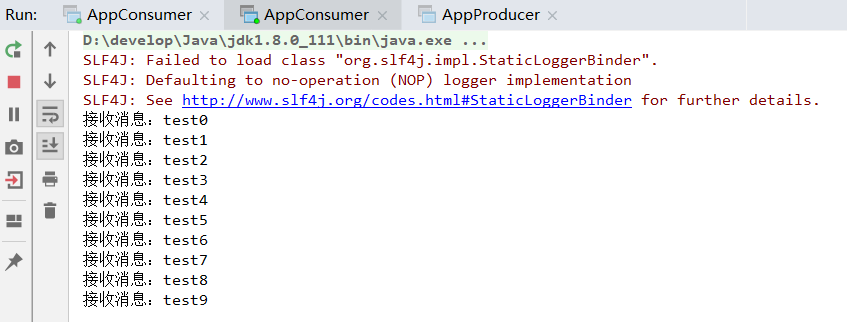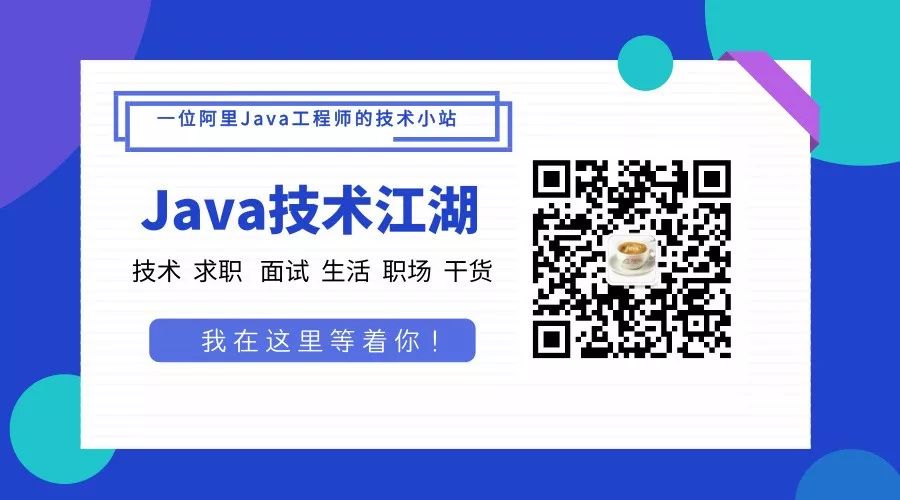消息队列中间件(二)使用 ActiveMQ
ActiveMQ 介绍
Active MQ 是由 Apache 出品的一款流行的功能强大的开源消息中间件,它速度快,支持跨语言的客户端,具有易于使用的企业集成模式和许多的高级功能,同时完全支持 JSM1.1 和 J2EE1.4 。
-
官方下载地址:
http://activemq.apache.org/download.html
-
官方安装教程:
http://activemq.apache.org/getting-started.html
-
默认管理页面:
http://127.0.0.1:8161/admin/
-
默认用户名和密码为
admin / admin。
conf / jetty-real.properties 您可以在此文件中进行配置。
-
默认服务端口:61616
ActiveMQ 特点
-
支持Java,C,C ++,C#,Ruby,Perl,Python,PHP等各种跨语言客户端和协议,如 OpenWire , Stomp , AMQP , MQTT.
-
完全支持JMS 1.1和 J2EE 1.4,支持瞬态,持久,事务和XA消息传递。
-
对 Spring 框架的支持以便ActiveMQ可以轻松嵌入到Spring应用程序中。
-
通过了常见的 J2EE 服务器测试,如 TomEE,Geronimo,JBoss,GlassFish 和 WebLogic 。
-
连接方式的多样化,ActiveMQ 提供了多种连接模式,例如 in-VM、TCP、SSL、NIO、UDP、多播、JGroups、JXTA。
-
可以通过使用 JDBC 和 journal 实现消息的快速持久化。
-
专为高性能群集,客户端 - 服务器,点对点通信而设计。
-
提供与语言无关的 REST API。
-
支持 Ajax 方式调用 ActiveMQ。
-
ActiveMQ 可以轻松地与 CXF、Axis 等 Web Service 技术整合,以提供可靠的消息传递。
-
可用作为内存中的 JMS 提供者,非常适合 JMS 单元测试。
ActiveMQ 消息
-
点对点队列模式
消息到达消息系统,被保留在消息队列中,然后由一个或者多个消费者消费队列中的消息,一个消息只能被一个消费者消费,然后就会被移除。例如订单处理系统。
-
发布-订阅模式
消息发送时指定主题(或者说通道),消息被保留在指定的主题中,消费者可以订阅多个主题,并使用主题中的所有的消息,例如现实中的电视与电视频道。所有客户端包括发布者和订阅者,主题中的消息可以被所有的订阅者消费,消费者只能消费订阅之后发送到主题中的消息。
ActiveMQ 概念
-
Broker,消息代理,表示消息队列服务器实体,接受客户端连接,提供消息通信的核心服务。
-
Producer,消息生产者,业务的发起方,负责生产消息并传输给 Broker 。
-
Consumer,消息消费者,业务的处理方,负责从 Broker 获取消息并进行业务逻辑处理。
-
Topic,主题,发布订阅模式下的消息统一汇集地,不同生产者向 Topic 发送消息,由 Broker 分发到不同的订阅者,实现消息的广播。
-
Queue,队列,点对点模式下特定生产者向特定队列发送消息,消费者订阅特定队列接收消息并进行业务逻辑处理。
-
Message,消息体,根据不同通信协议定义的固定格式进行编码的数据包,来封装业务 数据,实现消息的传输。
ActiveMQ 工程实例
下面是使用 ActiveMQ 的队列模式和发布-订阅模式的 Java 代码示例。
POM 依赖
<!-- Active-MQ -->
<dependency>
<groupId>org.apache.activemq</groupId>
<artifactId>activemq-all</artifactId>
<version>5.15.5</version>
</dependency>
队列模式消费者
import org.apache.activemq.ActiveMQConnectionFactory;
import javax.jms.*;
/**
* <p>
* 消息消费者,用于消费消息
*
* @Author niujinpeng
* @Date 2018/9/4 23:45
*/
public class AppConsumer {
private static final String url = "tcp://127.0.0.1:61616";
private static final String queueName = "queue-test";
public static void main(String[] args) throws JMSException {
// 1.创建ConnectionFactory
ActiveMQConnectionFactory connectionFactory = new ActiveMQConnectionFactory();
// 2.创建Connection
Connection connection = connectionFactory.createConnection();
// 3.启动连接
connection.start();
// 4.创建会话,false,不使用事务,自动应答模式
Session session = connection.createSession(false, Session.AUTO_ACKNOWLEDGE);
// 5.创建一个目标
Destination destination = session.createQueue(queueName);
// 6.创建消费者
MessageConsumer consumer = session.createConsumer(destination);
// 7.创建一个监听器
consumer.setMessageListener(new MessageListener() {
public void onMessage(Message message) {
TextMessage textMessage = (TextMessage) message;
try {
System.out.println("接收消息:" + textMessage.getText());
} catch (JMSException e) {
e.printStackTrace();
}
}
});
// 8.关闭连接
//connection.close();
}
}
队列模式生产者
import org.apache.activemq.ActiveMQConnectionFactory;
import javax.jms.*;
/**
* <p>
* 消息提供者,用于向消息中间件发送消息
*
* @Author niujinpeng
* @Date 2018/9/4 23:28
*/
public class AppProducer {
private static final String url = "tcp://127.0.0.1:61616";
private static final String queueName = "queue-test";
public static void main(String[] args) throws JMSException {
// 1.创建ConnectionFactory
ActiveMQConnectionFactory connectionFactory = new ActiveMQConnectionFactory();
// 2.创建Connection
Connection connection = connectionFactory.createConnection();
// 3.启动连接
connection.start();
// 4.创建会话,false,不使用事务,自动应答模式
Session session = connection.createSession(false, Session.AUTO_ACKNOWLEDGE);
// 5.创建一个目标
Destination destination = session.createQueue(queueName);
// 6.创建生产者
MessageProducer producer = session.createProducer(destination);
// 7.创建消息并发送
for (int i = 0; i < 10; i++) {
// 创建消息
TextMessage textMessage = session.createTextMessage("textMessage" + i);
// 发布消息
producer.send(textMessage);
System.out.println("发送消息:" + textMessage.getText());
}
// 8.关闭连接
connection.close();
}
}
队列模式生产者
import org.apache.activemq.ActiveMQConnectionFactory;
import javax.jms.*;
/**
* <p>
* 消息提供者,用于向消息中间件发送消息
*
* @Author niujinpeng
* @Date 2018/9/4 23:28
*/
public class AppProducer {
private static final String url = "tcp://127.0.0.1:61616";
private static final String queueName = "queue-test";
public static void main(String[] args) throws JMSException {
// 1.创建ConnectionFactory
ActiveMQConnectionFactory connectionFactory = new ActiveMQConnectionFactory();
// 2.创建Connection
Connection connection = connectionFactory.createConnection();
// 3.启动连接
connection.start();
// 4.创建会话,false,不使用事务,自动应答模式
Session session = connection.createSession(false, Session.AUTO_ACKNOWLEDGE);
// 5.创建一个目标
Destination destination = session.createQueue(queueName);
// 6.创建生产者
MessageProducer producer = session.createProducer(destination);
// 7.创建消息并发送
for (int i = 0; i < 10; i++) {
// 创建消息
TextMessage textMessage = session.createTextMessage("textMessage" + i);
// 发布消息
producer.send(textMessage);
System.out.println("发送消息:" + textMessage.getText());
}
// 8.关闭连接
connection.close();
}
}
发布订阅模式生产者
import org.apache.activemq.ActiveMQConnectionFactory;
import javax.jms.*;
/**
* <p>
* 主题模式
* 消息消费者,用于消费消息
*
* @Author niujinpeng
* @Date 2018/9/4 23:45
*/
public class AppConsumer {
private static final String url = "tcp://127.0.0.1:61616";
private static final String topicName = "topic-test";
public static void main(String[] args) throws JMSException {
// 1.创建ConnectionFactory
ActiveMQConnectionFactory connectionFactory = new ActiveMQConnectionFactory();
// 2.创建Connection
Connection connection = connectionFactory.createConnection();
// 3.启动连接
connection.start();
// 4.创建会话,false,不使用事务,自动应答模式
Session session = connection.createSession(false, Session.AUTO_ACKNOWLEDGE);
// 5.创建一个目标
Destination destination = session.createTopic(topicName);
// 6.创建消费者
MessageConsumer consumer = session.createConsumer(destination);
// 7.创建一个监听器
consumer.setMessageListener(new MessageListener() {
public void onMessage(Message message) {
TextMessage textMessage = (TextMessage) message;
try {
System.out.println("接收消息:" + textMessage.getText());
} catch (JMSException e) {
e.printStackTrace();
}
}
});
// 8.关闭连接
//connection.close();
}
}
发布订阅模式生产者
import org.apache.activemq.ActiveMQConnectionFactory;
import javax.jms.*;
/**
* <p>
* 主题模式
* 消息提供者,用于向消息中间件发送消息
*
* @Author niujinpeng
* @Date 2018/9/4 23:28
*/
public class AppProducer {
private static final String url = "tcp://127.0.0.1:61616";
private static final String topicName = "topic-test";
public static void main(String[] args) throws JMSException {
// 1.创建ConnectionFactory
ActiveMQConnectionFactory connectionFactory = new ActiveMQConnectionFactory();
// 2.创建Connection
Connection connection = connectionFactory.createConnection();
// 3.启动连接
connection.start();
// 4.创建会话,false,不使用事务,自动应答模式
Session session = connection.createSession(false, Session.AUTO_ACKNOWLEDGE);
// 5.创建一个目标
Destination destination = session.createTopic(topicName);
// 6.创建生产者
MessageProducer producer = session.createProducer(destination);
// 7.创建消息并发送
for (int i = 0; i < 10; i++) {
// 创建消息
TextMessage textMessage = session.createTextMessage("textMessage" + i);
// 发布消息
producer.send(textMessage);
System.out.println("发送消息:" + textMessage.getText());
}
// 8.关闭连接
connection.close();
}
}
GitHub源码 :
https://github.com/niumoo/message-queue
Spring 整合 ActiveMQ
在 Spring 中配置 Active MQ 就像Spring 整合其他功能一样,我们需要在 XML 配置中配置几个关键的实例即可。在 Active MQ 中有几个对象的实例是至关重要的,如 Active MQ jms 连接工厂,为了减少连接断开性能时间消耗的 jms 连接池以及生产者消费者等。
下面是一些详细说明。
-
ConnectionFactory 用于管理连接的连接工厂(Spring提供)。
-
一个 Spring 为我们提供的连接池。
-
JmsTemplate 每次发送都会重新创建连接,会话和 Productor。
-
Spring 中提供了SingleConnectionFactory 和CachingConnectionFactory(增加了缓存功能)。
-
JmsTemplate 是用于发送和接收消息的模板类。
-
是spring提供的,只需要向Spring 容器内注册这个类就可以使用 JmsTemplate 方便的操作jms。
-
JmsTemplate 类是线程安全的,可以在整个应用范围使用。
-
MessageListerner 消息监听器
-
使用一个onMessage方法,该方法只接收一个Message参数。
POM 依赖
<properties>
<spring.version>5.0.4.RELEASE</spring.version>
</properties>
<dependencies>
<dependency>
<groupId>junit</groupId>
<artifactId>junit</artifactId>
<version>4.11</version>
<scope>test</scope>
</dependency>
<dependency>
<groupId>org.springframework</groupId>
<artifactId>spring-context</artifactId>
<version>${spring.version}</version>
</dependency>
<dependency>
<groupId>org.springframework</groupId>
<artifactId>spring-jms</artifactId>
<version>5.1.1.RELEASE</version>
</dependency>
<dependency>
<groupId>org.springframework</groupId>
<artifactId>spring-test</artifactId>
<version>${spring.version}</version>
</dependency>
<!-- 这个版本的Spring需要使用JMS 2.0版本,但spring-jms的依赖没有自动导入JMS 2.0,而activemq-core会导入JMS 1.1的依赖 -->
<dependency>
<groupId>javax.jms</groupId>
<artifactId>javax.jms-api</artifactId>
<version>2.0.1</version>
</dependency>
<dependency>
<groupId>org.apache.activemq</groupId>
<artifactId>activemq-core</artifactId>
<version>5.7.0</version>
<exclusions>
<exclusion>
<artifactId>spring-context</artifactId>
<groupId>org.springframework</groupId>
</exclusion>
<exclusion>
<groupId>org.apache.geronimo.specs</groupId>
<artifactId>geronimo-jms_1.1_spec</artifactId>
</exclusion>
</exclusions>
</dependency>
</dependencies>
XML 配置
XML 公共配置
为了份文件配置方便管理,下面是提取出来的公共配置,为了在独立配置生产者和消费者 XML文件时引入,当然也可以直接把生产者和消费者以及所有的 XML bean 配置在一个文件里。
<?xml version="1.0" encoding="UTF-8"?>
<beans xmlns="http://www.springframework.org/schema/beans"
xmlns:xsi="http://www.w3.org/2001/XMLSchema-instance"
xmlns:content="http://www.springframework.org/schema/context"
xsi:schemaLocation="http://www.springframework.org/schema/beans http://www.springframework.org/schema/beans/spring-beans.xsd http://www.springframework.org/schema/context http://www.springframework.org/schema/context/spring-context.xsd">
<content:annotation-config/>
<!-- ActiveMQ为我们提供的connection factory -->
<bean id="targerConnectionFactory" class="org.apache.activemq.ActiveMQConnectionFactory">
<property name="brokerURL" value="tcp://127.0.0.1:61616"/>
</bean>
<!-- spring jms为我们提供的连接池 -->
<bean id="connectionFactory" class="org.springframework.jms.connection.SingleConnectionFactory">
<property name="targetConnectionFactory" ref="targerConnectionFactory"/>
</bean>
<!-- 一个队列模式目的地(队列名称),点对点的消息模式 -->
<bean id="queueDestination" class="org.apache.activemq.command.ActiveMQQueue">
<constructor-arg value="queue-spring"/>
</bean>
<!-- 一个主题模式目的地(主题名称),发布订阅消息模式 -->
<bean id="topicDestination" class="org.apache.activemq.command.ActiveMQTopic">
<constructor-arg value="topic-spring"/>
</bean>
</beans>
XML 消费者
消费者主要是一个消息监听器,监听指定的队列或者主题的消息信息,来有消息时调用回调监听处理方法。这里我注释掉了监听的队列模式,指定了主题模式。
<?xml version="1.0" encoding="UTF-8"?>
<beans xmlns="http://www.springframework.org/schema/beans"
xmlns:xsi="http://www.w3.org/2001/XMLSchema-instance"
xmlns:content="http://www.springframework.org/schema/context"
xsi:schemaLocation="http://www.springframework.org/schema/beans http://www.springframework.org/schema/beans/spring-beans.xsd http://www.springframework.org/schema/context http://www.springframework.org/schema/context/spring-context.xsd">
<!-- 导入公共配置 -->
<import resource="common.xml"/>
<!-- 配置消息监听器 -->
<bean id="consumerMessageListener" class="net.codingme.jms.consumer.ConsumerMessageListener"/>
<!-- 配置消息监听容器 -->
<bean id="jmsContainer" class="org.springframework.jms.listener.DefaultMessageListenerContainer">
<property name="connectionFactory" ref="connectionFactory"/>
<!-- 队列模式 -->
<!--<property name="destination" ref="queueDestination"/>-->
<!-- 主题模式 -->
<property name="destination" ref="topicDestination"/>
<property name="messageListener" ref="consumerMessageListener"/>
</bean>
</beans>
XML 生产者
生成者的配置主要是使用 spring jms 模版对象,创建生产者实例用于生产消息。
<?xml version="1.0" encoding="UTF-8"?>
<beans xmlns="http://www.springframework.org/schema/beans"
xmlns:xsi="http://www.w3.org/2001/XMLSchema-instance"
xmlns:content="http://www.springframework.org/schema/context"
xsi:schemaLocation="http://www.springframework.org/schema/beans http://www.springframework.org/schema/beans/spring-beans.xsd http://www.springframework.org/schema/context http://www.springframework.org/schema/context/spring-context.xsd">
<!-- 导入公共配置 -->
<import resource="common.xml"/>
<!-- jms模版-->
<bean id="jmsTemplate" class="org.springframework.jms.core.JmsTemplate">
<property name="connectionFactory" ref="connectionFactory"/>
</bean>
<bean class="net.codingme.jms.producer.ProducerServiceImpl"></bean>
</beans>
生产者编写
1. 定义接口
package net.codingme.jms.producer;
/**
* <p>
*
* @Author niujinpeng
* @Date 2018/11/2518:19
*/
public interface ProducerService {
public void sendMessage(String message);
}
2. 主题模式生产者
package net.codingme.jms.producer;
import org.springframework.beans.factory.annotation.Autowired;
import org.springframework.jms.core.JmsTemplate;
import org.springframework.jms.core.MessageCreator;
import javax.annotation.Resource;
import javax.jms.*;
/**
* <p>
*
* @Author niujinpeng
* @Date 2018/11/25 19:24
*/
public class ProducerServiceImpl implements ProducerService {
@Autowired
JmsTemplate jmsTemplate;
/**
* 主题模式
*/
@Resource(name = "topicDestination")
Destination destination;
@Override
public void sendMessage(String message) {
// 使用jmsTemplate发送消息
jmsTemplate.send(destination, new MessageCreator() {
// 创建消息
@Override
public Message createMessage(Session session) throws JMSException {
TextMessage textMessage = session.createTextMessage(message);
return textMessage;
}
});
System.out.println("发送消息:" + message);
}
}
3. Spring 启动 生产者
package net.codingme.jms.producer;
import org.springframework.context.support.ClassPathXmlApplicationContext;
/**
* <p>
* 启动器
*
* @Author niujinpeng
* @Date 2018/11/25 21:48
*/
public class AppProducer {
public static void main(String[] args) {
// 装载配置文件
ClassPathXmlApplicationContext context = new ClassPathXmlApplicationContext("classpath:producer.xml");
ProducerService service = context.getBean(ProducerService.class);
for (int i = 0; i < 10; i++) {
service.sendMessage("test" + i);
}
context.close();
}
}
消费者编写
Spring启动和生产者类似。下面是消费者监听器的实现。
package net.codingme.jms.consumer;
import javax.jms.JMSException;
import javax.jms.Message;
import javax.jms.MessageListener;
import javax.jms.TextMessage;
/**
* <p>
* 消息监听器
*
* @Author niujinpeng
* @Date 2018/11/25 22:28
*/
public class ConsumerMessageListener implements MessageListener {
@Override
public void onMessage(Message message) {
TextMessage textMessage = (TextMessage) message;
try {
System.out.println("接收消息:" + textMessage.getText());
} catch (JMSException e) {
e.printStackTrace();
}
}
}
运行测试
首先主题模式下启动两个消费者,使用生产者推送10条消息。

在每个消费者下面都可以看到推送的完整消息。

文中代码已经上传到GitHub:
https://github.com/niumoo/message-queue
推荐阅读
(点击标题可跳转阅读)
夯实Java基础系列16:一文读懂Java IO流和常见面试题
夯实Java基础系列15:Java注解简介和最佳实践
夯实Java基础系列14:深入理解Java枚举类
夯实Java基础系列11:深入理解Java中的回调机制
夯实Java基础系列10:深入理解Java中的异常体系
夯实Java基础系列9:深入理解Class类和Object类
夯实Java基础系列8:深入理解Java内部类及其实现原理
夯实Java基础系列7:一文读懂Java 代码块和代码执行顺序
一文搞懂抽象类和接口,从基础到面试题,揭秘其本质区别!
一文读懂 Java 文件和包结构,解读开发中常用的 jar 包
一文了解 final 关键字的特性、使用方法以及实现原理

点个“在看”,转发朋友圈,都是对我最好的支持!
- 本文标签: 注释 监听器 web value bean db consumer amqp 线程 管理 Word App producer 协议 dependencies MQ git 安装 schema 缓存 时间 订单处理 apache XML Service 端口 java基础 本质 tar tk IDE http CTO message ssl 参数 IO struct 安全 Connection JDBC 代码 下载 java 消息队列 Property 源码 开源 id 并发 数据 ECS UDP ActiveMQ 服务器 REST NIO jetty 企业 连接池 标题 GitHub python spring 实例 connectionFactory classpath final CXF js UI core junit TCP JMS PHP list java注解 pom Ajax session cat API ACE HTML queue 测试 开发 服务端 https 配置 src 单元测试
- 版权声明: 本文为互联网转载文章,出处已在文章中说明(部分除外)。如果侵权,请联系本站长删除,谢谢。
- 本文海报: 生成海报一 生成海报二











![[HBLOG]公众号](https://www.liuhaihua.cn/img/qrcode_gzh.jpg)

